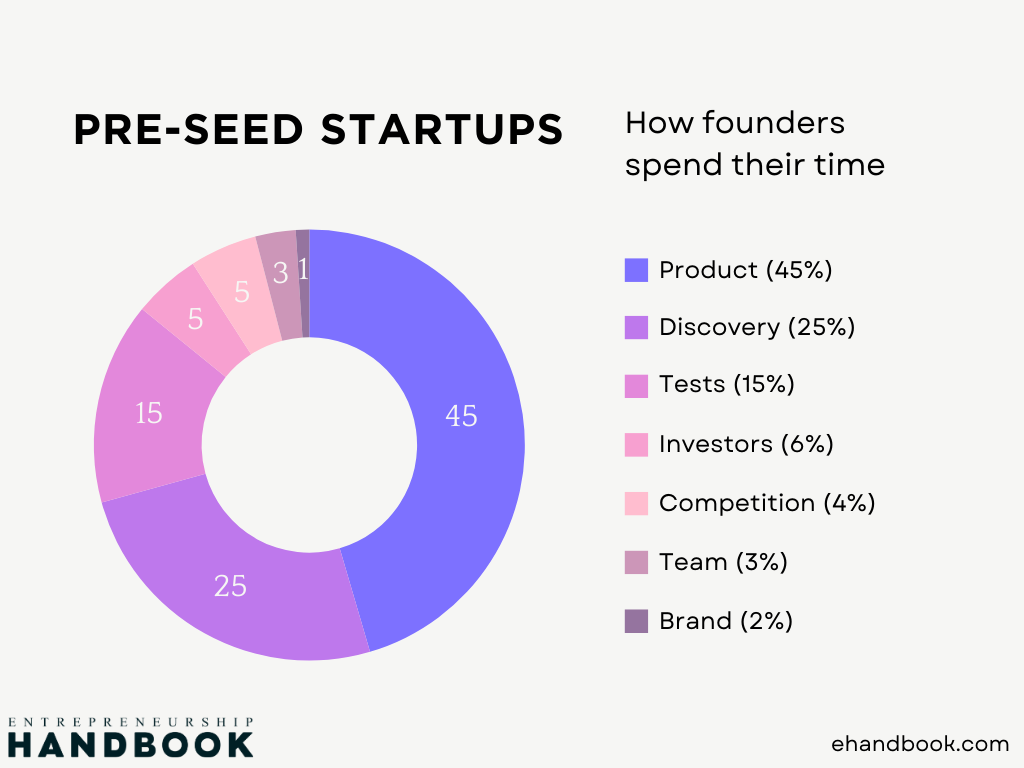
A pie chart of how startup founders spend their time in the pre-seed stages
I wanted to share what a typical week or “plate” looks like as a cofounder of a pre-seed stage startup. This is a new venture for me and one I look forward to sharing more with you.
Note: These areas of work are split among the founding team, so individually the “plate” may look different for each cofounder — unless you’re a solo founder.
Ad break:
Compare up to 5 business loans without a hard credit pull!
Compare 2024's top online business lenders. Secure and fast with no impact to your credit score. With over 12,000 small businesses funded, we know how to make lenders compete to give you the best offer. See your loan options in minutes, and get funding as fast as 24 hours. Strongest network coverage for those who have been in business for over 2 years with over $200K in annual revenue. Fuel your business today!
1. Product (45%)
(Highest priority)
Everything else does not matter other than what you are building.
Do not get overly caught up with team culture, brand, forecasts, or even competitors.
The only thing that matters is that you are building something new, innovative, and solves a real problem for a specific customer.
What this looks like is dogfooding and using your own product every day — obsessing over the details of the problem, the UX, the data, the flows.
It is supposed to be painful in the beginning. Early stage software is ugly. It’s buggy as hell. It’s overly manual and it is the opposite of beautiful. If it’s not, red flag. Beautiful means you’re spending way too much time on table stakes and polish when you should be focusing on solving harder problems. Polish comes after innovation.
Yes, early stage software is rough around the edges, but getting through this phase is absolutely crucial before anything else. You are building an MVP that has never been built before; it takes time to figure it out and build something uniquely valuable.
Unless until you have sticky customers, traction or some strong signals of product market fit, your product should be your #1 focus hands down.
2. Discovery (25%)
(Talking to customers)
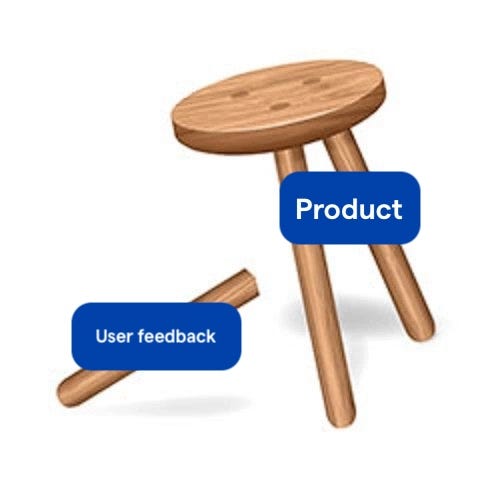
You can’t build a product without a tight feedback loop with early users
You cannot do step one above without this step. The only way to know what to build is to validate it with people who fit your ICP (ideal customer profile).
This is something many founders get wrong. Your early users need to be your target buyer not just anyone in your network. Otherwise, you’ll receive empty positive feedback such as, “Good idea” or “I like this” — but what you want to hear is “when is it available” and “how much does it cost.”
Track these calls, build a pipeline, and have more than 10 a week in the early stages. Bring your product and engineering team into these calls, share recordings and notes, and always be demoing.
In the early stages of software development, prioritization is done by building for specific customer use cases and running tests. You cannot build a product isolated from your end users. See next phase.
3. Tests (15%)
(with beta users)
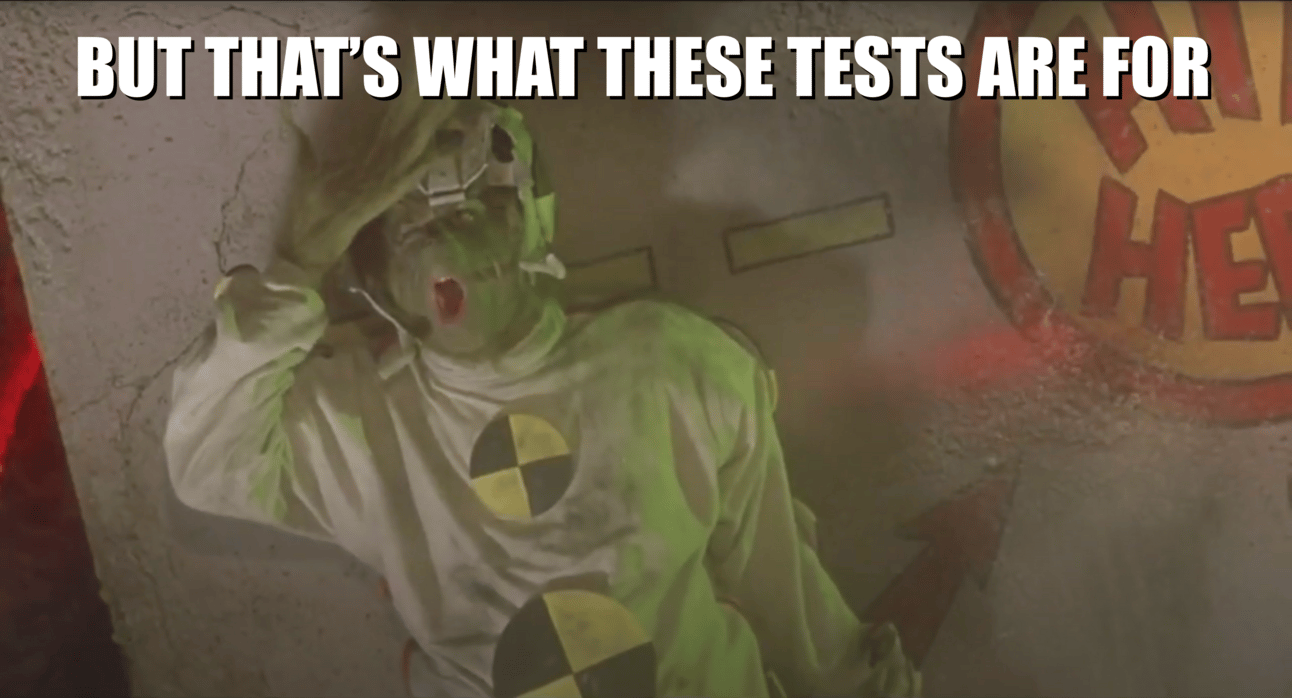
An early-stage founder
From your customer discovery calls, a percentage of them will be ready to trial your early stage software.
This group should fit your ICP and be comfortable with adopting early tech. Just be prepared to do a lot of hand-holding and caveating. Your job as a founder is to sell them on the vision enough so that they can overlook the bumps in the road and want to keep using the product over time.
These beta tests validate that what you’re building is on track to match what you’re demoing. This is rarely the case.
But a tight feedback loop is critical for surfacing key product problems in engineering that need to be solved, ones that might’ve been missed in the design process.
Also, this test phase is building your first library of case studies and logos that you’ll use in your GTM (go to market) launch.
4. Investors (6%)
(Fundraising)
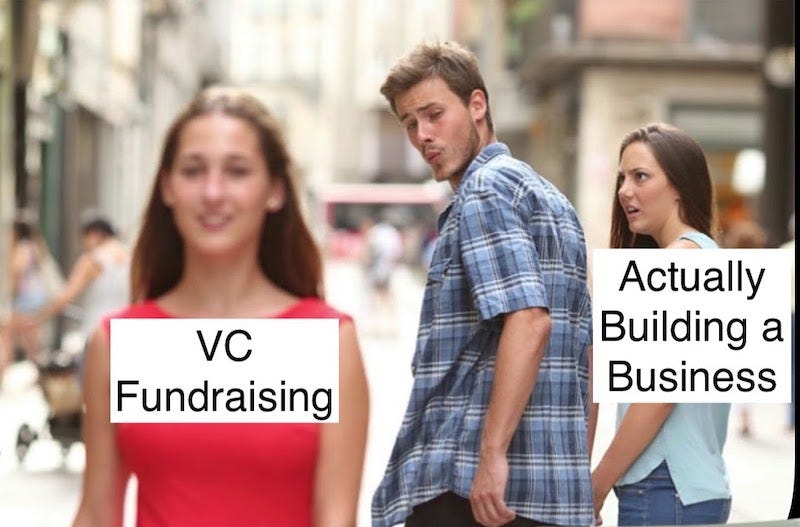
Fundraising is extremely time consuming and come in waves — all calm and quiet and then suddenly all at once. VCs talk to each other. So when they hear of a hot deal that’s interesting or that a term sheet has been dispensed, they all come running and your calendar gets filled up quick.
This distracts you from building the product and running tests with users. But don’t rush it. Take the time you need to properly set your company up for success with good terms and close enough runway to get to PMF (product market fit).
I found that early stage investors are instrumental to helping you shape the narrative of what you’re building, that you can use to inspire your customers and early recruits.
5. Competition (4%)
(Research)

Marketing Technology Landscape Supergraphic (2019): Martech 5000 (actually 7,040)
It’s naive and hubris-heavy to think you have no competition at all.
Unless you’re building in a completely blue ocean, you’re inevitably going to have competition and your users and investors will ask you about this (i.e., what is your moat?).
If you have a weak answer, they will not believe in you or your product. For example, if you’re on a call and someone hears your pitch and says, “Oh, this sounds very similar to …” and they name a competitor that you’ve never heard of — you’ve already lost credibility.
You need to be the absolute expert on the market you’re building in and be able to clearly and concisely state how your product is different. You can’t do this with any confidence if you haven’t studied your competition. Just don’t stare at it.
Spend time to identify niches, gaps, strengths and weaknesses in the market that you can use to navigate early conversations. Reminder, this is only 4% of your time.
6. Team (3%)
(Recruiting and Culture)
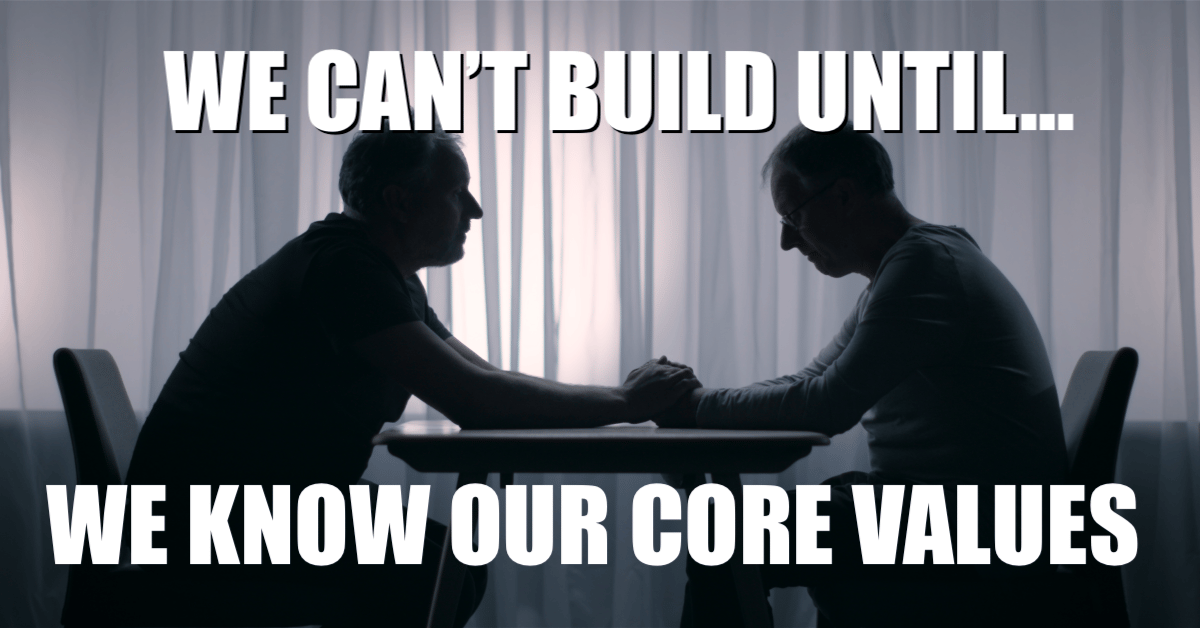
First things first
You should always be thinking about your first 1–3 critical hires to fill in the skill gaps of your founding team, and keep them warm for when your funding arrives, but in the very early stages of startup building, it should just be you and your cofounders and a handful of contractors.
You want to stay lean, stay efficient, and find the kernel of innovation to exploit before hiring FTEs. Small teams move faster. Don’t risk adding too many cooks to the kitchen too soon and slowing your decisions down.
Move slow on hiring until you have stronger signal of where to build — until you are confident it will scale well. Then look for people you’ve worked with in the past, whom you trust in times of chaos, and whom you know do good work. Bring them on with equity.
For culture, cofounders need to be able to trust each other, build friendship, get used to how each other work, and most of all, learn how to disagree.
But do not over-invest on building a team culture before you even have a product. The best team building I’ve seen is done in service of a beautiful, strong product. Where everyone is bought into the product and customer, not the culture. You’re building a super early stage company with a handful of people. Don’t get distracted by LinkedIn fluff.
7. Brand (2%)
(Early identity)

You need people to take you seriously, but…
A poor brand at the start can be a hurdle when you’re convincing early users to give your product a try — you want people to take your company seriously. Some of the tactics to achieve this include getting the dotcom for your domain, spending some time designing a decent logo, and putting together a professional-looking deck or a landing page that tells a compelling story.
But do not spend too much time building the brand because in the early days, the brand is the product. A brand without a quality product is an empty promise.
In the later stages, this can switch: when a company has multiple products, the brand carries the products. The unifying story is the brand, and that becomes a major focus of investment. But in the early stages, the brand is malleable and needs to follow the product, hence why brand is 2% compared to product’s 45% at this stage.
Areas you shouldn’t be prioritizing
I’m going to annoy a few people here but a few areas that are missing from this list (i.e., 0%) at this pre-seed early startup stage: Marketing, Product Management, Customer Success, Sales, Support, and BizOps. The cofounders are already wearing versions of these hats at this stage but as formal areas to prioritize, they come later, with scale.
If you’re still reading this, the obvious takeaway from this post is this:
Where are you spending the majority of your time?
In this post, I’ve merely retold what Sam Altman has always said about building startups — focus on building an awesome 10X product before anything else.
Thanks for reading. I’d appreciate your feedback and please share with other early stage founders if you think it will help them on their journeys.
Dave
PS. If you’re interested in a demo of our pre-seed product (currently in stealth) — send me a DM.
Top reads from Medium This Week (Friend Links)
Little Links
🐝 Sign up to Beehiiv - the best place to build a newsletter in 2024.
📺 Subscribe to us on YouTube. (New content!)
📖 Read 8 years of our content on Medium.


